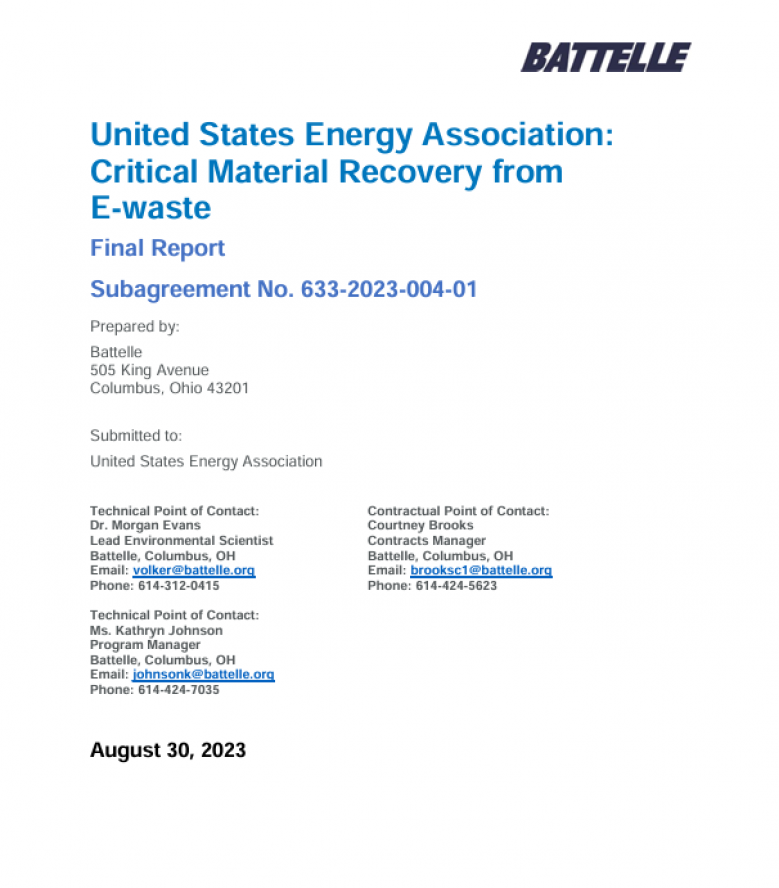This report was developed for the United States Energy Association (USEA) to describe the opportunity for recovering critical materials (CMs) from electronic waste (e-waste). The research summarized herein includes: 1) a review of the location and purpose of CMs in a selection of electronic devices, 2) descriptions of the current supply chain, recycling infrastructure and the challenges they pose in achieving e-waste circularity, and 3) an assessment of state-of-the art recovery technologies, their current scales, and the existing gaps. This report covers a subset of CMs that are most relevant to e-waste. This list includes aluminum, arsenic, gallium, indium, nickel, tantalum, tungsten, titanium, tin, platinum group metals (PGMs - platinum, palladium, rhodium, ruthenium, osmium, and iridium), and rare earth elements (REEs - lanthanum, cerium, praseodymium, neodymium, promethium, samarium, europium, gadolinium, terbium, dysprosium, holmium, erbium, thulium, ytterbium, lutetium, scandium, and yttrium).
The review indicates that CMs are found in a range of concentrations in the major categories of e-waste covered in this report, which are wind turbines, solar panels, phones, computers, screens (cathode-ray tube [CRT], light-emitting diode [LED], or liquid-crystal display [LCD]), electric vehicle magnets, and medical devices. CMs are often in the form of magnets, semiconductors, and phosphors, but they can also be used for structural and electrical applications.
Overall, there is a lack of directly scaled and/or applicable technology for recovering CMs from e-waste. Promising laboratory-scale technologies should be studied at larger scales to validate them for industrial use. Existing industrial-scale recovery efforts should be expanded to secure future supplies. Additionally, there is a need to fund more research both in 1) technologies to recover CMs from specific components, such as transparent screens, with high concentrations of high-value materials, and 2) technologies / strategies for comprehensively recycling products that contain multiple valuable materials.
However, bridging gaps in CM recovery technologies alone is not sufficient to achieve circularity. A variety of strategies should be integrated with technological innovations to drive recovery efforts such as: better regulations, policy changes, connections between supply chain segments, end-of-life management, incentive structures around collection and recycling, incentives around better product design while incorporating R10 circular strategies, and stakeholder behavior changes.
In summary, this report illustrates that there is both a significant opportunity and a need for recovering CMs from e-waste through technological innovations and supply chain/recycling infrastructure improvements. CMs are vital for many modern technologies and defense applications, especially those related to clean energy. Recycling e-waste is a crucial strategy to enable a domestic market supply chain capable of producing a long-term supply of these elements.
| Attachment | Size |
|---|---|
| 1.29 MB |


